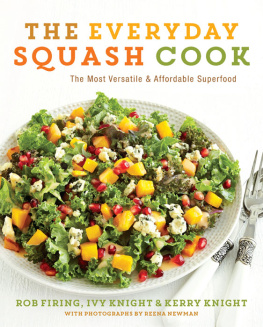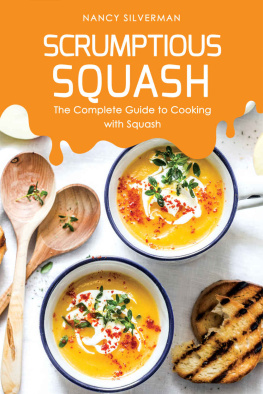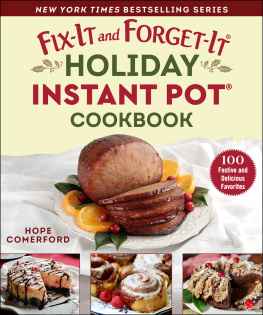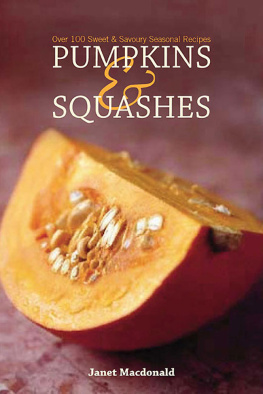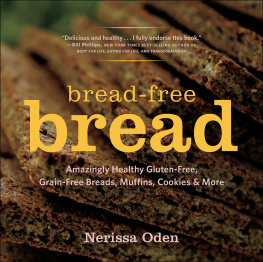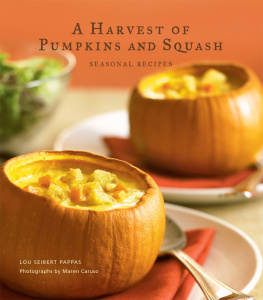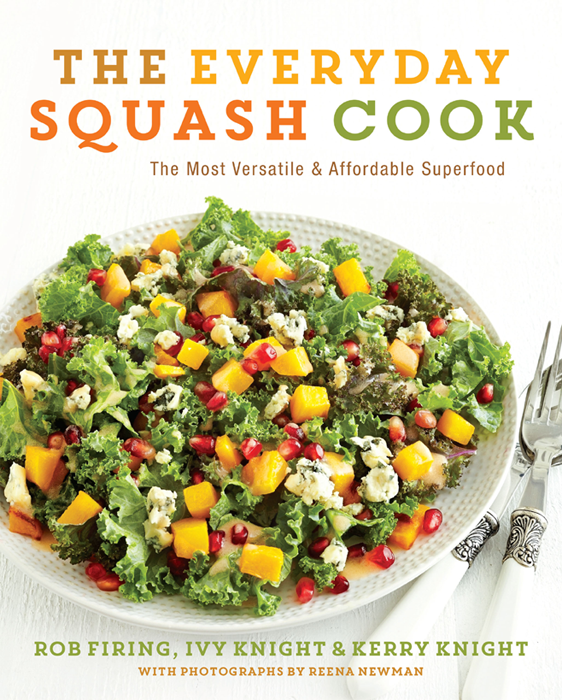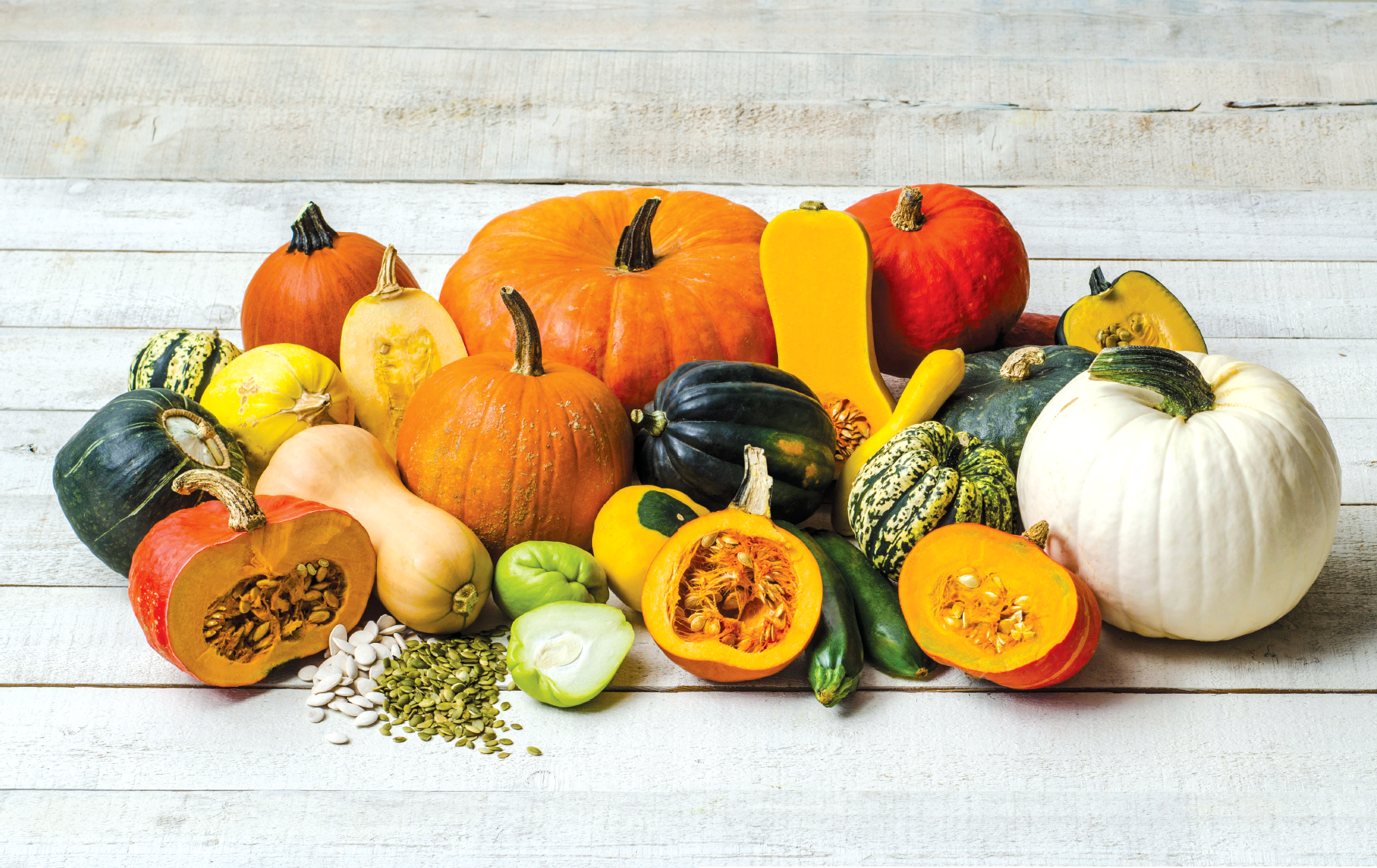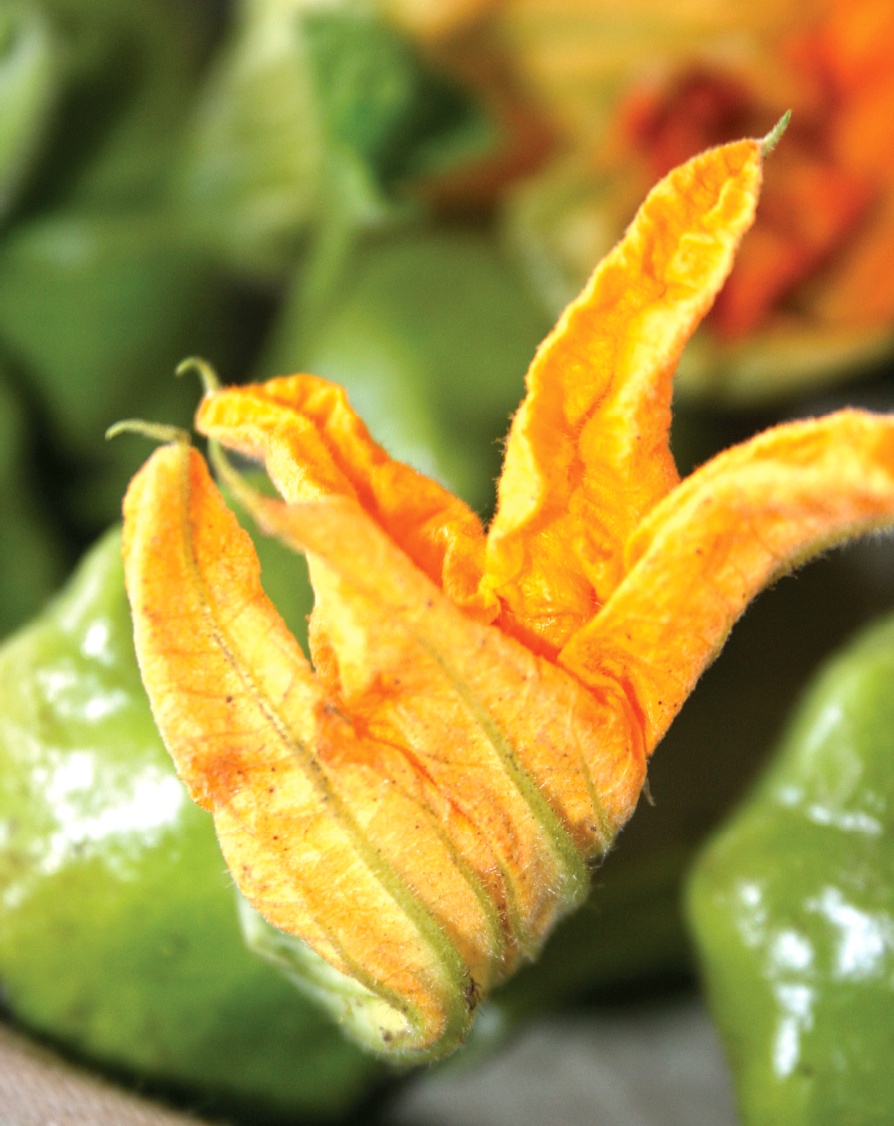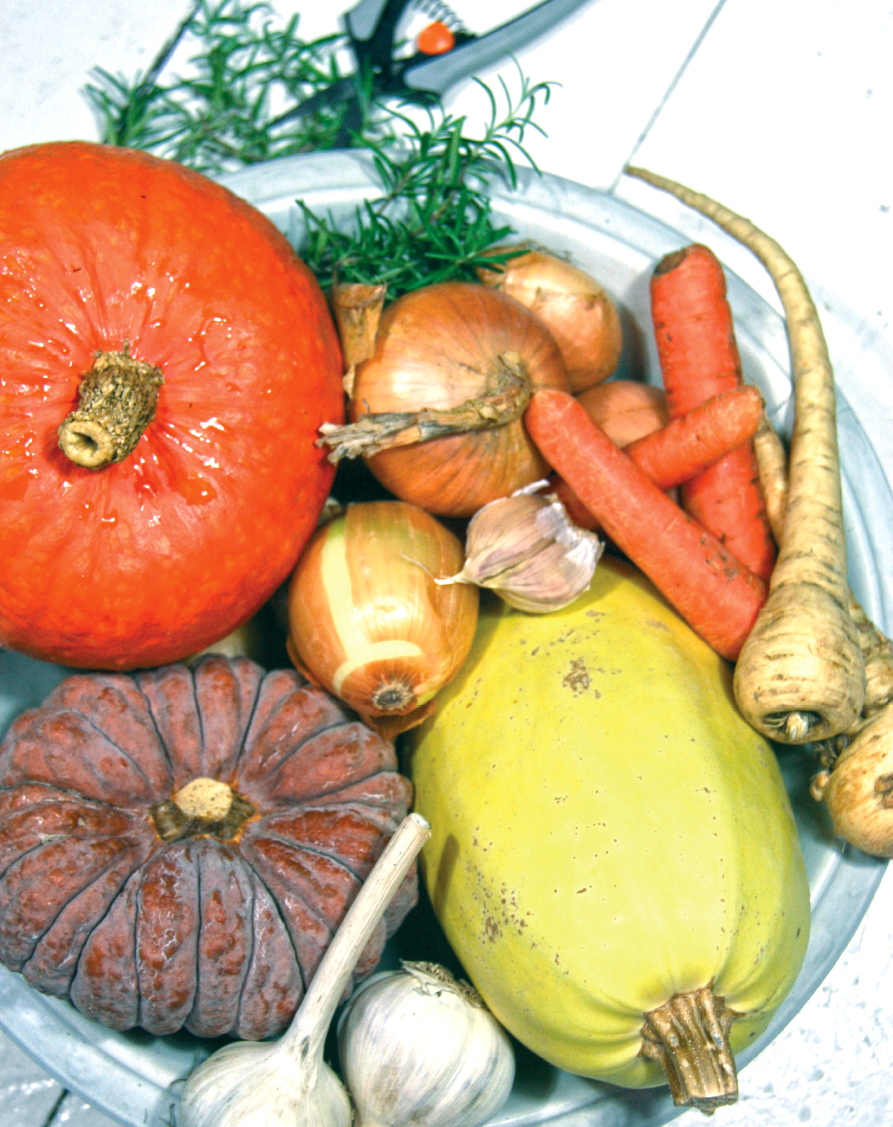A t first glance, you might think squash is just a vegetable and this is just a book, but look closer and youll discover one of the worlds tastiest and most versatile vegetables and a trove of easy-to-use recipes.
As a Canadian, I treasure the many moments each and every day when we come together and share flavours. Food is one of the most important parts of our cultural identity, and squash has been a welcome guest at the table for thousands of years.
As a cook I strive to create tasty, nutritious food, so I always appreciate when my ingredients are easy to find and easy to prepare. On Prince Edward Island during squash season, all you have to do is leave your car unlocked on the street and when you return itll be stuffed with fresh local squash and a recipe will be tucked onto your windshield!
As a father I embrace the opportunity to do my best in the kitchen, to pass on knowledge, wisdom and health. None of which works when you cook something your kids wont eat. Thats why I love squashbecause they do!
Turn the pages, find a recipe youd like to try and prepare to impress yourself in your own kitchen as you join the authors in elevating the humble squash to its true rock-star status!
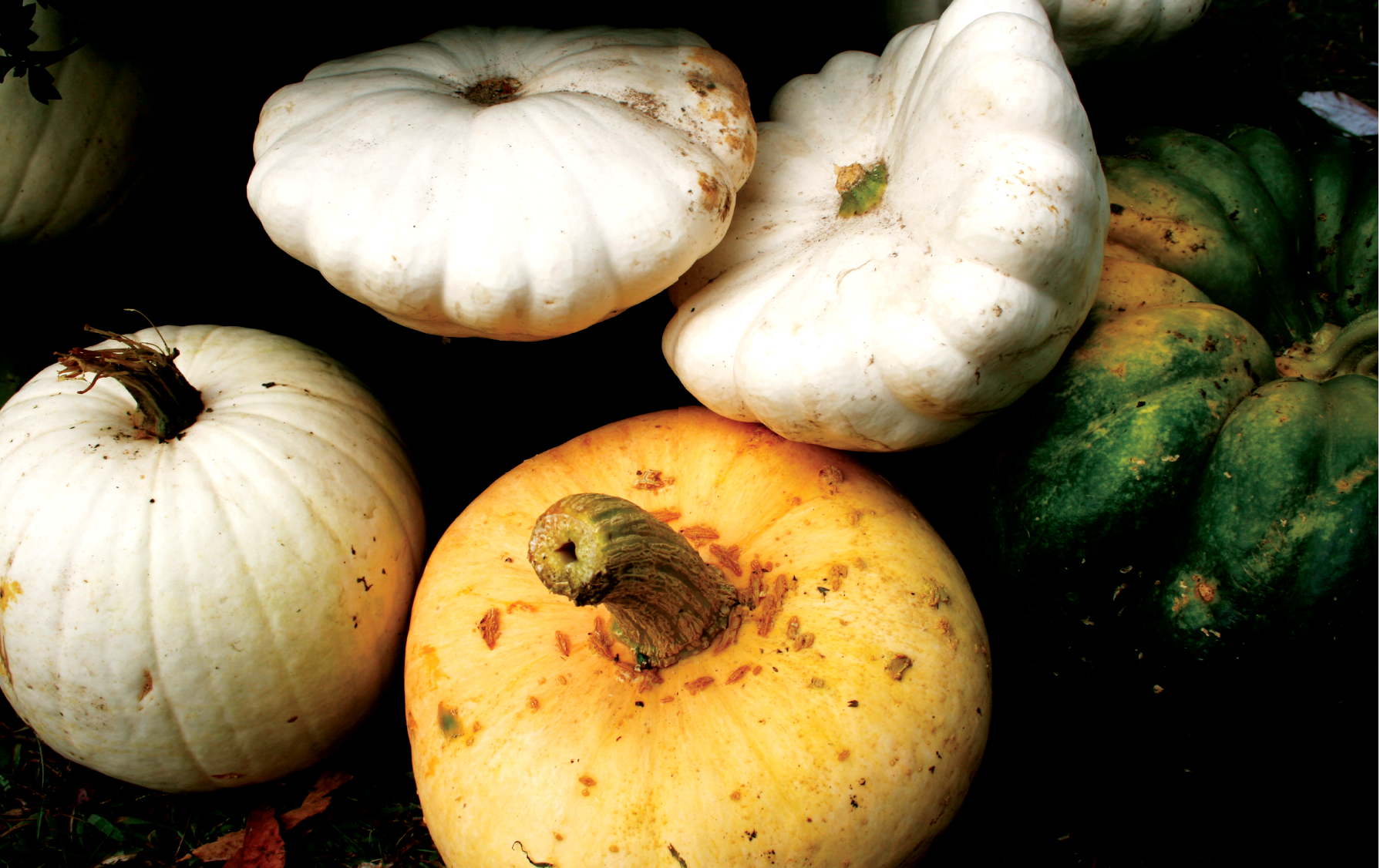


T o many of us, the mention of squash translates first to the indoor racquet sport, and second to a mushy side dish served as an afterthought at holiday dinners once or twice a year. This is a shame because squashes are certainly one of the tastiest and most cookable, handsome, affordable and nutritious foods one can find, and they are readily available in their many wonderful varieties in grocery stores nearly all year long.
Squashes are categorized by growing season into either winter or summer varieties. Summer squashes ripen more quickly and are generally harvested when the fruit is less mature. Winter squashesthose generally larger, thick-skinned varietiesare harvested in the late summer and fall. Their hard outer flesh means they ship very well and can be stored for extended periods of time without refrigeration while keeping their good looks, flavour and nutritional qualities.
In The Everyday Squash Cook we focus on nine of the most common varieties of squash. Most of our recipes call for winter squash, but summer squashes, especially zucchini, make appearances throughout. We even have a recipe for their flowersa special seasonal treat.
In addition to being delicious, squash is one of the most nutritious cultivated foods on the planet. By volume, its level of vitamin A surpasses that of almost all other foods. Squash is also high in vitamin B6, potassium, manganese and many other essential vitamins and minerals. The good news doesnt stop there: the fruit is also loaded with health-protective properties, including those derived from cucurbitacins, powerful anti-inflammatory, antifungal and antioxidant compounds unique to the squash family, used in medicine to help treat and prevent cancers. Pound for pound, you cant name another food that is as nutritious and easily available as the noble squash.
We came together to write this book because we each embrace squash in different ways using our different skill sets: Kerrys mother, Joan, is a wonderful baker, and she raised her son rightthats why most of the recipes for breads, muffins and sweets originated from him. Rob is the gardener, so he provided the research on the many different varieties of squash and their nutritional properties. Rob is also a griller, and those recipes where a barbecue or grill come into play are all his. Ivy is the chef, and she drew on her ten years of experience in professional kitchens to compile the master list of recipes and to test each one with Kerry in their home kitchen. The recipes were tested again by Chantal, the food stylist who worked on the photo shoot for the book. All of the recipes were a hit with the photo crew, and were sure theyll be a hit with you and your crew at home.
The Everyday Squash Cook aims to equip you with all of the information you need to prepare sumptuous dishes and entire meals for your family and friends. Kid-friendly snacks, appetizers, soups, quick breads, salads, entres, classic mainstays and some fun and unexpected tricks of the trade are all included. Every recipe in this book is designed to work for busy home cooks, even those who have never prepared this superfood before. So what are you waiting for? Grab a squash and join us in the kitchen.
W ith almost five times the recommended daily dose of vitamin Aand a host of other vitamins, minerals, micronutrients and antioxidantssquash gets high marks as one of natures superfoods. Winter squashes, such as pumpkin and butternut squash, are especially good for us. Just a single serving (about 7 ounces) of butternut squash has more than 450% of the daily recommended value of vitamin A, which we need to maintain good vision and eye health, strengthen our immune systems, maintain healthy skin and mucous membrane cells and even fight cancer (vitamin A inhibits the development of DNA in cancer cells).
Different kinds of squash have different nutritional properties, some of which are completely unique to squash. Where butternut and other orange squashes are higher in vitamin A, others are higher in vitamin C, potassium, vitamin B6, manganese, thiamin and magnesium (see , for more details).
Most squashes have a healthy balance of carbohydrates and fibre and very little fat content (except for the seeds, which contain healthy oils). For example, 1 cup of roasted or canned pumpkin contains 19.8 grams of carbohydrates and 7.1 grams of dietary fibre. The Heart and Stroke Foundation recommends we consume between 21 and 38 grams of fibre each day. Fibre is good for our digestive system and helps regulate cholesterol and blood sugar levels. Since fibre stays in our digestive system longer than other foods we eat, it slows down the rate at which we absorb sugars from carbohydrates. That means high-fibre foods like squash can effectively lower carbohydrate count.

